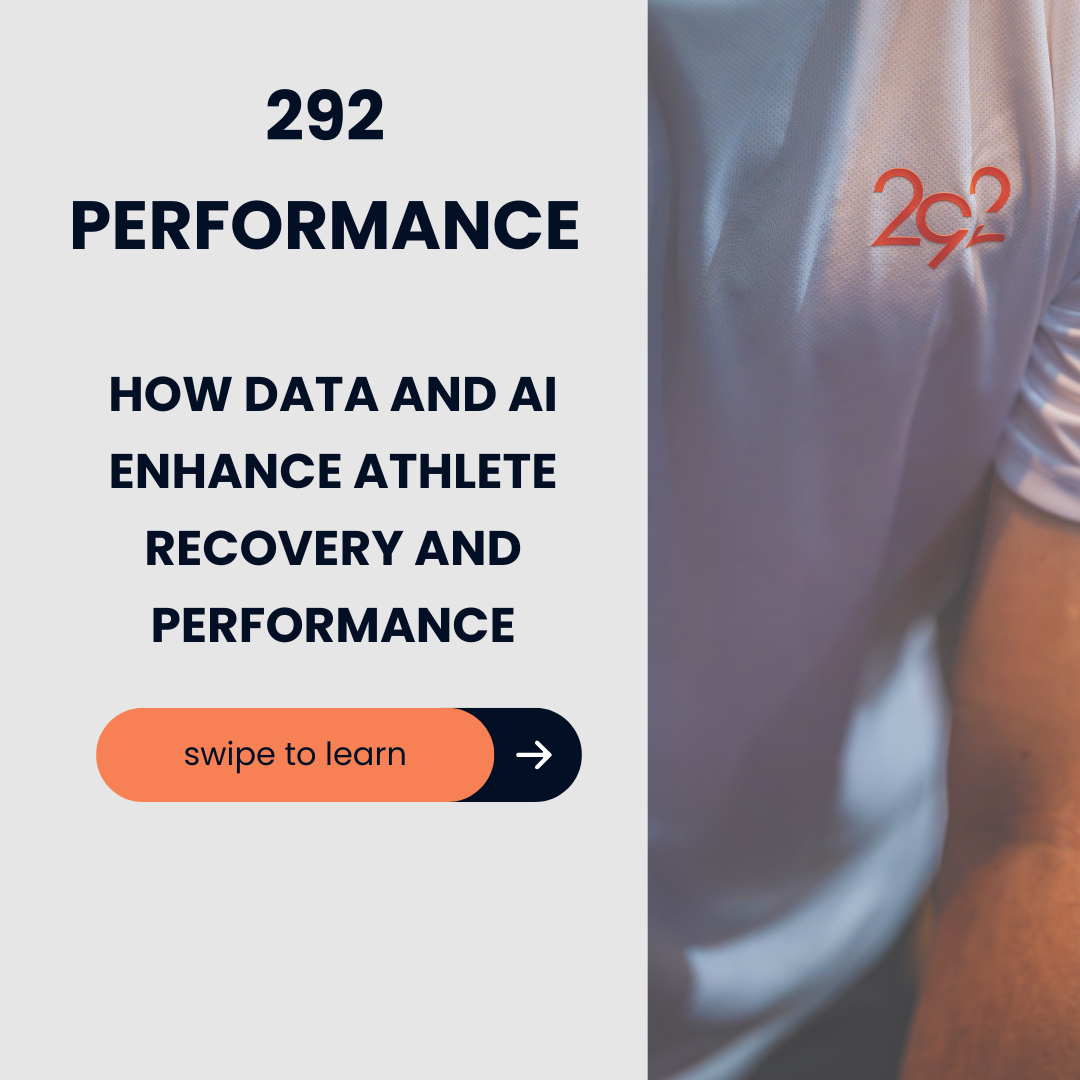How Data and AI Enhance Athlete Recovery and Performance
At 292 Performance, we use technology to provide individualised support to elite athletes. One of the key ways we do this is through advanced data analysis, using tools like GPS match data and AI-driven insights.
Through our partnership with Breakaway Data, we access training and match data from clubs, always ensuring compliance with GDPR laws, which state that athletes own their personal data. By collaborating closely with clubs, we provide a seamless and cooperative exchange of information to support athlete performance.
Once we receive an athlete’s data, we build an individualised algorithm for each player. This allows us to evaluate key physical metrics and assess how hard each training session or match was on a scale of 1 to 10. By tracking trends over time, we can determine whether an athlete’s training load is increasing or decreasing and whether they are optimally prepared for competition.
We use AI-driven algorithms to quantify training load, scoring each session out of 10 to assess intensity and recovery needs
With this information, we can make precise decisions on recovery and conditioning. For example, if an athlete is sprinting significantly more than usual, we adjust their strength training to ensure they are well-conditioned for that workload. If there is an unexpected dip in their training load, we engage with clubs to ensure they are fit and ready for upcoming matches.
Power BI: Transforming Athlete Data into Actionable Insights
Raw data alone is not enough—it needs to be visualised in a way that tells a clear story. That’s why at 292 Performance, we use Power BI to create compelling data visualisations that help athletes, coaches, and performance staff make informed decisions.
With our AI-driven approach, we can track individual training trends, compare them to match demands and identify any concerning spikes or drops in workload. Power BI allows us to present this information in an intuitive format, making it easier to understand why an athlete is experiencing certain physical states.
Power BI visualisations help us detect trends in neuromuscular function, ensuring athletes maintain optimal readiness for competition
Beyond training and match data, we are also integrating wearable technology like WHOOP bands and Oura rings. By analysing heart rate variability, resting heart rate, and sleep patterns, we gain deeper insights into how an athlete’s body is responding to stress. This helps us make data-driven decisions that go beyond physical load, considering the holistic well-being of the athlete.
Our data analysis methods are a core component of the work 292 Performance undertakes with all individuals we work with.
Profiling Athletes to Build Tailored Training Programmes
Another critical component of our approach at 292 Performance is physical profiling. We conduct in-depth assessments to understand how an athlete moves, their neuromuscular function, and their biomechanical efficiency.
With a vast dataset collected over 20 years from international footballers and Olympic athletes, we can benchmark an athlete’s physical capabilities against elite standards. We assess key performance indicators, including:
- Jump mechanics (countermovement jumps, single-leg hops using VALD force plates)
- Force production (calf, hamstring, and hip strength)
- Trends in performance changes (identifying improvements or declines)
By using these insights, we create highly effective, individualised programmes that address weaknesses, enhance strengths, and ensure long-term resilience. Power BI further enhances this process, making it easy for athletes to visualise their progress and understand the rationale behind their training plans.


